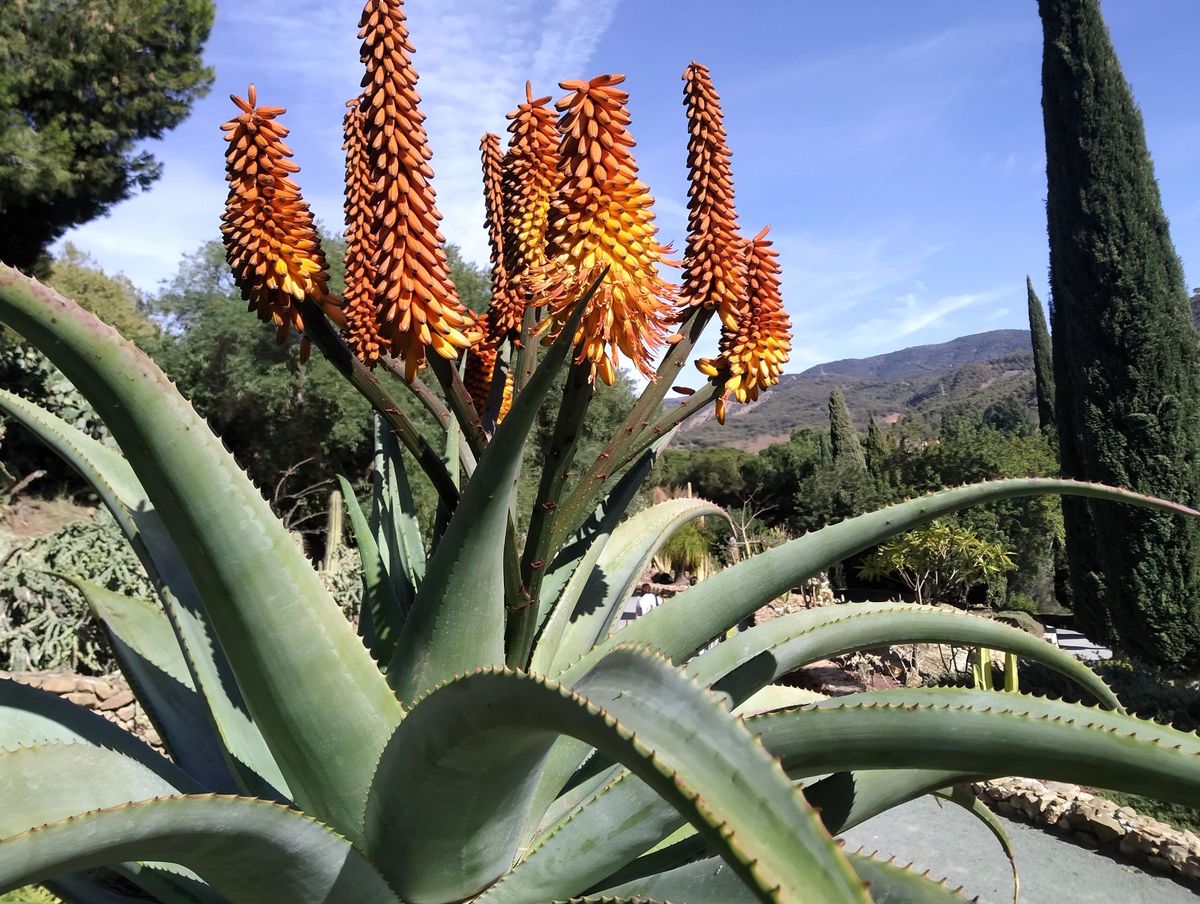Aloe thraskii
Scientific name: Aloe thraskii Baker
Family: Asphodelaceae
Common name: Dune Aloe, Coast Aloe
Aloe is a very well known genus of succulent plants, in which there are almost 350 different species. The name is a Latin word coming from the Greek, which in turn is doubtful if it has its origin in Hebrew, Arabic or Indian; but in any case they are all words that refer to something bitter, since the juice of the leaves of the aloes is very bitter.
In winter many aloes bloom; we look at a very ornamental one. In nature, the coastal aloe only reproduces in the dunes near the coast of the South African province of KwaZulu-Natal, where it is endemic. It is therefore ideal for cultivation in Mediterranean gardens not far from the sea. It was named in 1880 by botanist John Gilbert Baker in honor of a Mr. Thrask, of whom nothing is known.
Aloe thraskii is a slow-growing species, with a single trunk that can eventually reach 4 m in height, and is adorned with fibers from the dried leaves. Its leaves are large, robust and very curved, so that the apices of the lower ones touch the trunk. The edges have reddish spines and are deeply grooved, forming a "U" in cross section. The color is light green, without spots or lines. On the leaves appear 2 or 3 inflorescences in clusters that in turn branch. They are conical in shape and almost half a meter, and in them are densely grouped flowers, which are greenish at first and when ripe lemon yellow or orange. Their nectar makes them very attractive to bees. The fruit is a reddish brown triangular capsule.
This plant works well as an isolated specimen; it should be located in a sunny place with soil that drains well and does not become waterlogged. At La Concepción it can be seen next to other aloes in the succulent area.

